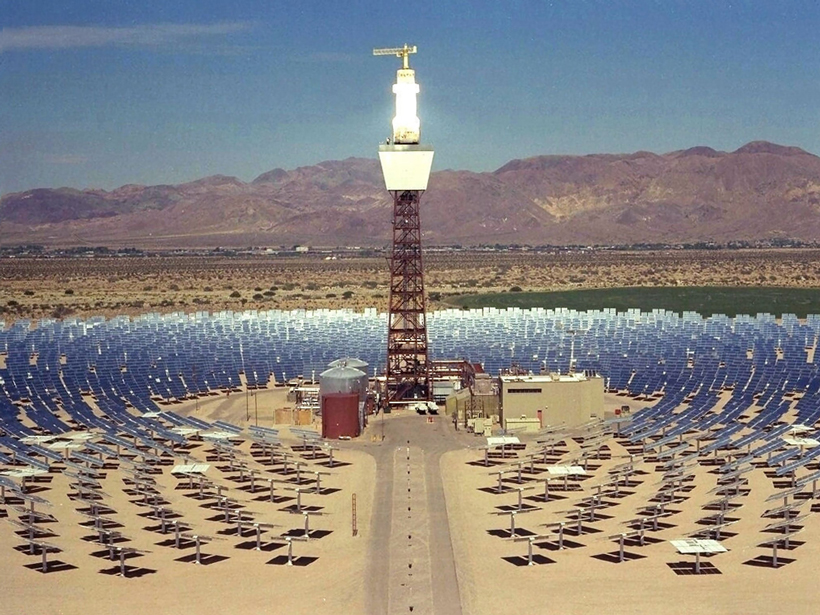A largely positive new report on renewable energy trends could provide a shot in the arm for the upcoming climate negotiations set for Paris, France, at the end of the year.
The global investment in renewable power and fuels increased 17% in 2014 to $270 billion, according to the United Nations Environment Programme’s (UNEP) 31 March report, Global Trends in Renewable Energy Investment 2015. UNEP notes that this figure does not include large-scale hydropower projects exceeding 50 megawatts because that technology has been mature for decades.
The level of investment was higher than in any year except for 2011.
The level of investment was higher than in any year except for the record $278.8 billion in 2011 and represents the first increase in investment in 3 years. The high level in 2014 is largely due to a $74.9 billion boom in solar installations in China and Japan and a record $18.6 billion in final investment decisions for European offshore wind projects, according to the report, which was prepared by the Frankfurt School–UNEP Collaborating Center and Bloomberg New Energy Finance.
Effects of 2014’s Renewable Energy Trends on Climate
Findings include the fact that a record-breaking 95 gigawatts of wind and solar photovoltaic power systems were installed in 2014 compared with 74 gigawatts in 2013. In addition, renewable energy technologies made up 48% of net power capacity added worldwide in 2014, and the proportion of electricity generated from cumulative installed renewable power capacity increased to 9.1% in 2014 compared with 8.5% in 2013.

These trends “prevented the emission of an estimated 1.3 gigatonnes” of carbon dioxide, the report states. “However, at the recent rate of increase, it will take until 2030 for renewables excluding large hydro to reach 20% of global generation.”
The Impact of Lower Oil Prices
The recent plunge in the price of crude oil will “dampen investor confidence” in parts of the renewable energy sector, including in developing countries that burn oil for power and in the biofuel market, according to the report. However, oil and renewables “do not compete for power sector dollars” in most of the world.
“Wind and solar sectors should be able to carry on flourishing, particularly if they continue to cut costs” per megawatt hour, the report adds.
Outlook on Renewables
United Nations Secretary-General Ban Ki-moon wrote in the foreword that the report “increases our confidence that a low-carbon world is obtainable and that we are on the right path to reach our objective, even though there is still much to accomplish.” Ban cautioned that “policy uncertainty and other barriers to investment need to be abolished.”
He said that a further mobilization of financial markets to support low-carbon growth could come out of the Paris climate summit. “We need more private and public investment incentives—including putting a price on carbon to provide markets with the right policy signals to move them to invest in climate solutions.”
The increase in renewable energy “is the most significant shift of any source of energy ever in the history of modern energy systems.”
At a 1 April speech in Washington, D. C., UNEP Executive Director Achim Steiner said the increase in renewable energy “is the most significant shift of any source of energy ever in the history of modern energy systems.”
The levels of investment show that renewables are “not some niche market that is coming to maturity,” he added. Rather, the world is seeing “technology coinciding with a public policy challenge and an economic transformation challenge unprecedented in modern industrialized development.”
Steiner said that although the 2014 investment numbers did not set a record, the decline in prices in renewable technology “buys you a lot more in installed capacity than in 2011.”
More Work Needed to Limit Greenhouse Emissions
At a 31 March briefing in Geneva, Switzerland, to release the report, several speakers cautioned that although the report has much good news regarding renewables, a lot of work is required to limit greenhouse gas emissions and to speed the shift to renewables.
“We do seem to be in a slightly more optimistic mood at the moment,” said Angus McCrone, chief editor of Bloomberg New Energy Finance and a lead author of the report. He said, however, “One should not underestimate the challenges there.”
Specifically, “there really is a lot to do to get a credible signal to the investor that a really high fraction of renewables has a long-term place in the electricity mix,” McCrone explained.
Eric Usher, head of the UNEP Finance Initiative, noted that the report’s findings are important for the upcoming climate summit. “Progress in renewables definitely plays into that agreement. It is critically important for governments to see some signaling from the private sector in terms of the willingness to essentially change the industrial fabric of our economy.” The renewable sector, he added, provides the “most obvious signs” that such change is possible.
—Randy Showstack, Staff Writer
Citation: Showstack, R. (2015), Renewable energy trend could help with climate mitigation, Eos, 96, doi:10.1029/2015EO027533. Published on 3 April 2015.
Text © 2015. The authors. CC BY-NC 3.0
Except where otherwise noted, images are subject to copyright. Any reuse without express permission from the copyright owner is prohibited.

